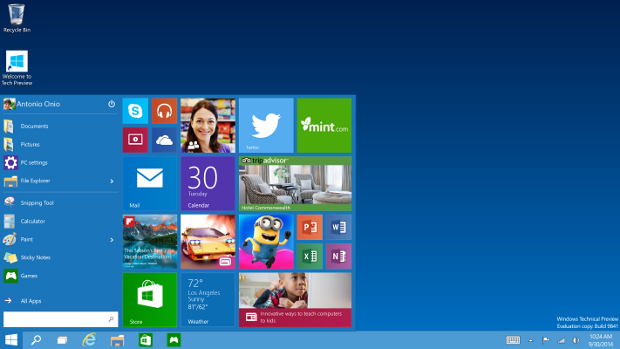Humbled by businesses’ dislike for Windows 8, Microsoft has issued a mea culpa, offered the world a first peek at Windows 10 and pledged that the new OS will delight IT executives. But the true test of whether Microsoft can move past its Windows 8 mistakes will come when Windows 10 is commercially released at some point next summer.
“On the surface, everything they announced is on the right track and bodes well. They definitely acknowledged they’ve heard the Windows 8 feedback and are trying to make amends,” said David Johnson, a Forrester Research analyst. “But it’ll come down to what the experience is like hands on.”
“Windows is at a threshold, and now it’s time for a new Windows,” said Terry Myerson, EVP, Microsoft
How severe are enterprise customers’ misgivings about Windows 8? By the end of 2013, Windows 8’s installed base in businesses worldwide stood at 2% of all Windows copies, compared with about 51% for Windows 7 and 31% for Windows XP.
So Microsoft has a tough road ahead, and day one was Tuesday (30/09/2014) when executives from the company’s Operating Systems Group addressed head on at a press conference in San Francisco many of the complaints CIOs have voiced over the past two years about Windows 8 and its two major revisions — Windows 8.1 and Windows 8.1 Update.
“Windows is at a threshold, and now it’s time for a new Windows,” said Terry Myerson, executive vice president of the Operating Systems Group.
Interface choice
First on the to-do list is fixing the clunky co-existence in Windows 8 of the touch-optimised Modern interface for tablets and the traditional desktop for mouse and keyboard users. Through a number of modifications, including the triumphant return of the Start button and menu and the addition of “windowed” Modern apps, Windows 10 will offer a more organic experience for the two interface scenarios, and intelligently adapt to a user’s device and applications, according to Microsoft.
Fixing this is paramount because the interplay between the two interfaces is akin to schizophrenic behaviour in Windows 8, Johnson said.
Microsoft also said Windows 10 will be a single OS for a variety of devices, not only PCs and tablets, but also the Xbox console and smart phones, meaning it will replace Windows Phone, and that it will offer what Microsoft calls “a converged application platform” with a single app store, in an attempt to make life easier for developers.
Security will also get beefed up in various ways, including with data loss prevention features baked into the OS that Microsoft says will protect data as it travels among devices, removable drives, email servers and cloud systems.
“That’s a very compelling feature for enterprises,” Johnson said.
Management and deployment
Windows 10 will also be designed as to be easier to manage and deploy. And enterprises will be able to opt out of Microsoft’s rapid release pace of Windows updates, an issue of particular concern among IT departments that feel the company has lately been pressuring them in this area at the expense of desktop stability.
It is also clear Microsoft wants to be in sync with enterprises’ assessments of Windows 10. So it is launching the Windows Insider Program to create a large stable of testers that it will be in contact with as it releases frequent “builds” of the new OS. The first one will be released on Wednesday.
For Michael Silver, a Gartner analyst, it is clear that Microsoft is approaching the development of Windows 10 with a much different mindset than it had with Windows 8. This time around, it seems Microsoft is intent on listening closely to customer feedback, so it gave Tuesday’s event a low-key vibe.
“I’m surprised at how quiet and understated the announcement was,” he said.
Steve Kleynhans, another Gartner analyst, said that what Microsoft showed during the event “certainly resolved many of the most visible criticism that have blocked many people from even investigating Windows 8/8.1.”
Windows 7 comfort
“The new experience is certainly familiar to Windows 7 users, but still seems to provide access to the best of the Windows 8 capabilities. Of course in the end we will need to see — and use — the experience on a broad set of devices to really understand how well it works,” he said via email.
Kleynhans would have liked to get more details on the changes and enhancements that were mentioned. “Some of the management, security, and app delivery enhancements seem promising, but again we will have to see them in action to really know how close they come to hitting the mark,” he said.
Juan Carlos Perez, IDG News Service








Subscribers 0
Fans 0
Followers 0
Followers